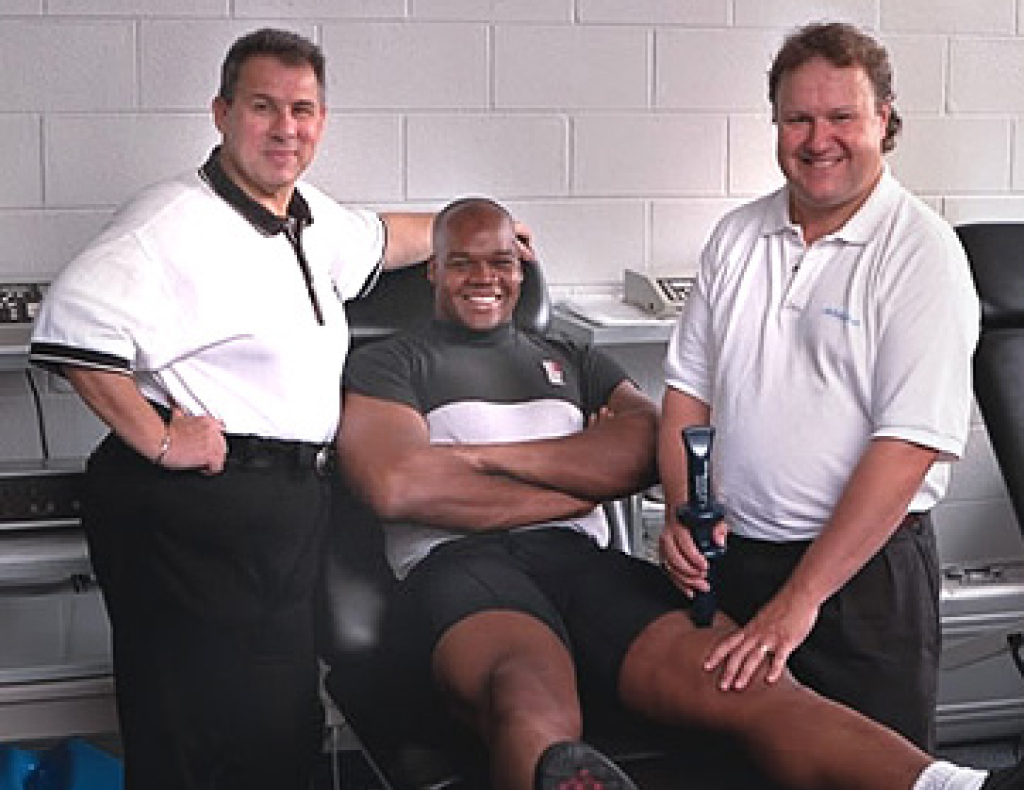Massage therapist John G. Louis has worked with professional athletes, including the 2005 World Series Champions Chicago White Sox baseball team.
Here, Louis outlines challenges and successes in the world of sports massage therapy, and gives some advice to therapists interested in taking their sports massage careers all the way into the end zone.
When I began my career as a massage therapist in 1980, there were only a handful of us in the U.S. who worked full-time with professional athletes. I quickly realized that massage therapy for pro athletes was going to grow—and that one day most, if not all, professional athletes would receive regular therapeutic massage. So far, my predictions have only partially come to pass.
I have a lot of passion around this subject. Massage for athletes has been my life’s work. I was fortunate enough to have some amazing opportunities over the years. I’ve worked for five teams and have been part of two championship teams: the 1984 Soccer Bowl Champions, the Chicago Sting; and the Chicago White Sox baseball team in the 2005 World Series.
My time with the 2005 World Series Champions Chicago White Sox is the work I’m most proud of. The players who saw me regularly had terrific results and played some of the best baseball of their careers. I believe my work during that season was a necessary component of winning the championship. The entire medical staff deserves credit as well.
Additionally, I was the personal massage therapist for Harlem Globetrotter great Meadowlark Lemon in 1983. I also worked for the Kansas City Comets in 1982 and the Chicago Horizons soccer team in 1980. I continue to work with professional and amateur athletes at my clinic in Winnetka, Illinois.

Proactive vs. Reactive
In the book Sports Massage, author Jack Meagher claims sports massage gives an athlete 20 percent more in the areas of performance, injury prevention, flexibility and career longevity. I can validate this claim based on the results I saw in the many athletes with whom I worked. I’ll go further, and say that receiving regular therapeutic massage is one of the most important things an athlete can do for herself. In fact, I believe it’s the best proactive sports medicine there is. I want to be careful not to diminish the important role athletic trainers and physical therapists play in sports medicine, as their work is essential as well; however, most of what an athletic trainer does is reactive, and because physical therapists only work on a doctor’s prescription, everything they do is reactive.
Comprehensive, therapeutic massage is so powerful because we can identify trouble spots—adhesions, ischemia, hypertonicity and spasm—and restore tissue before these conditions become injurious. Additionally, when tissue is healthy, the athlete can perform at his best.
One Trainer’s Rant
I see two problems that are hindering the growth of massage therapy in sports: education for the athletic trainer; and education for the massage therapist. Athletic trainers have traditionally dismissed massage as a placebo. Although there has been very good movement toward recognizing the therapeutic value of massage, this is still the pervasive mindset among athletic trainers.
Here’s an example: I had a discussion with an NFL trainer right after his team won the Super Bowl, and I asked him about his team’s use of massage. He told me they contracted with a few local massage therapists who they would call in periodically. I then asked him if he had seen value in the program. This guy proceeded to go on a rant, saying, “Listen, I like massage and I even get one myself once in a while. But don’t go trying to get me to endorse massage as a therapeutic modality, because it’s not.” I have been hearing this same old song for 35 years, from many trainers. Trainers need to learn that massage—advanced, therapeutic massage—has incredible value; and that they are doing their players a disservice by failing to embrace this needed modality.
Something this trainer said was very telling. He said he uses massage himself; however, he’s still not convinced it’s therapeutically valuable. He has probably never had a good massage. This leads me to my second point: Massage therapists need good education as well.
How You Can Massage Pros
I am asked quite a bit by therapists how they can get into working with professional athletes. Here are my recommendations:
- Get advanced training. Neuromuscular therapy, with an emphasis on trigger-point therapy, is very important. Would-be sports massage therapists should also learn Active Isolated Stretching, which I believe is the only consistently safe and effective stretching technique out there.
- Get experience. You have to be able to assess tissue and treat it quickly. Your palpatory skills have to be excellent. I always recommend volunteering your time at local college and high school sporting events. Marathons are great training ground. I wouldn’t go after the goal of sports massage therapist to a professional team without providing hundreds of hours of massage to amateur athletes first.
There is no question that massage therapy for athletes will continue to grow, because there is a huge need for it. We can meet that need.

